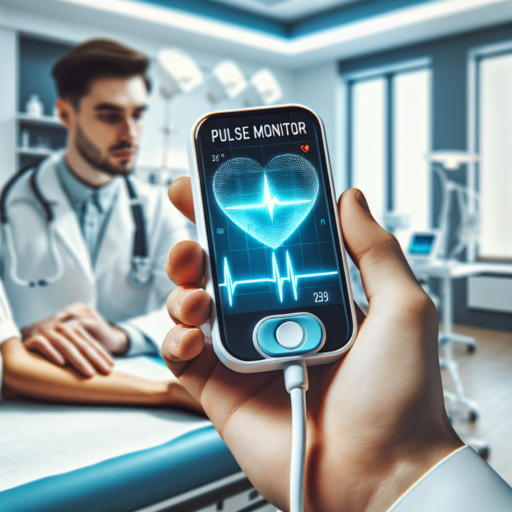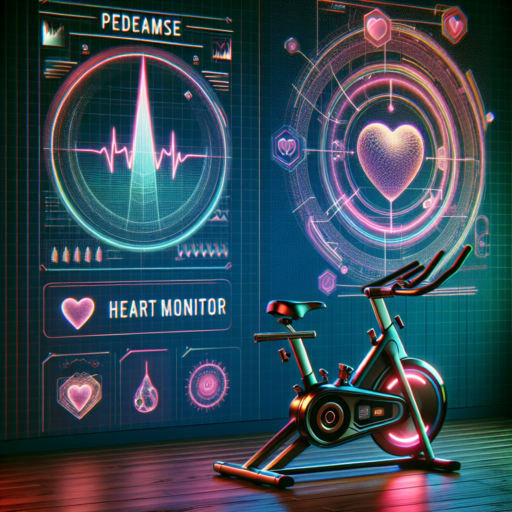No se han encontrado productos.
What is a Pulse Monitor and How Does It Work?
A Pulse Monitor, often referred to as a heart rate monitor, is a device designed to measure and display the rate at which your heart beats. This device is indispensable for individuals engaged in fitness activities, those monitoring cardiac health, or anyone curious about their heart’s performance during various tasks. By providing instantaneous data about one’s heartbeat, pulse monitors help in tailoring exercise intensity, monitoring stress levels, and ensuring overall cardiovascular health.
The operational mechanism of a pulse monitor involves either optical or electrical sensors. Optical sensors, used in wrist-worn devices like smartwatches and fitness bands, emit light onto the skin and measure the light absorption changes caused by blood flow. This method, known as photoplethysmography (PPG), offers a convenient way to track heart rate continuously without requiring chest straps. On the other hand, electrical sensors, often found in chest strap designs, detect the heart’s electrical signals. They are known for providing highly accurate readings, making them favored by professional athletes and fitness enthusiasts.
Integration of pulse monitors with smartphones and fitness apps has revolutionized how individuals track their heart rates, offering a wealth of data at their fingertips. This data can be used to assess the effectiveness of workouts, understand resting heart rates, and even monitor recovery times. By analyzing this information over time, users can make informed adjustments to their fitness routines, enhancing both performance and well-being.
The Top Benefits of Using a Pulse Monitor Regularly
Monitoring your heart rate through a pulse monitor is a critical step towards ensuring a healthy lifestyle. It’s not just for athletes or fitness enthusiasts; incorporating it into your daily life offers a slew of advantages that can contribute significantly to your well-being. Here, we’ll explore some of the top benefits that underscore the importance of keeping a close watch on your heart rate.
Improved Cardiovascular Health
Using a pulse monitor regularly can lead to improved cardiovascular health. By enabling you to keep track of your heart rate in real-time, these devices help you adjust your workout intensity to stay within your optimal heart rate zone. This practice ensures that you are exercising safely, maximizing the health benefits of your physical activity without overstraining your heart.
Efficient Weight Management
Another significant benefit is the role of a pulse monitor in efficient weight management. It offers a way to measure the intensity of your workouts, ensuring that you are burning calories effectively. By monitoring your heart rate, you can adjust your exercise routine to switch between fat burn and cardio zones, allowing for a more targeted approach to weight loss or maintenance.
Enhanced Exercise Safety
Lastly, safety during exercise cannot be overstated. For individuals with underlying health conditions or those new to rigorous physical activity, a pulse monitor acts as a safeguard. It alerts you when your heart rate spikes too high or drops too low, enabling immediate adjustments to your activity level. This real-time feedback is essential for a safe and healthy exercise regimen, minimizing the risk of heart-related complications.
Comparing the Best Pulse Monitors of 2023
In the fast-evolving world of healthcare technology, pulse monitors have become an essential tool for fitness enthusiasts and patients alike. The quest for the best pulse monitor is a journey through a landscape of innovative features, accuracy, and user-friendly designs. The year 2023 has seen the emergence of a range of pulse monitors that promise to meet the diverse needs of users with varying requirements.
Key Features to Consider
When comparing the best pulse monitors of 2023, several key features emerge as critical for optimal performance and utility. The accuracy of readings stands out as the foremost criterion, as it directly impacts the reliability of health monitoring. Additionally, the integration of technology for seamless connectivity with smartphones and other devices enhances the user experience, allowing for real-time tracking and data analysis. The ease of use, including the simplicity of wearing the device and navigating its interface, also plays a significant role in user satisfaction.
Top Choices for Athletes and Health Enthusiasts
In the lineup of the best pulse monitors, models designed for athletes and health enthusiasts often feature robust construction, advanced analytics, and the ability to monitor various health indicators beyond just the pulse rate. These devices cater to the needs of users seeking detailed insights into their physical condition and performance. Features such as waterproofing, long battery life, and GPS functionality enrich the functionality of these pulse monitors, making them invaluable tools for serious fitness practitioners.
Emerging Trends in Pulse Monitoring Technology
The landscape of pulse monitoring technology in 2024 is marked by the evolution of sensors and algorithms that offer enhanced precision and personalization. Innovations such as AI-driven analysis and the inclusion of environmental sensors for context-aware health recommendations reflect the dynamic nature of this field. As users demand more from their health gadgets, the integration of comprehensive health management features is becoming increasingly common, distinguishing the top performers in this category.
How to Choose the Right Pulse Monitor for Your Needs
When selecting the right pulse monitor, it’s essential to consider what fits your health and fitness goals. Whether you’re a seasoned athlete, a health enthusiast, or someone with specific medical needs, finding the right device can significantly impact your daily life and well-being.
Understanding Your Purpose and Preferences
Initially, understanding the primary purpose behind your need for a pulse monitor guides you through narrowing down your options. Are you aiming to track your heart rate during intensive workouts, or do you need to monitor your pulse due to health conditions? Besides the purpose, your preference in wearing style—whether you prefer wrist-worn devices, chest straps, or even smart clothing with built-in sensors—plays a crucial role. Each style has its pros and cons, with wrist-worn models offering convenience and chest straps typically providing more accuracy.
Considering Features and Functionality
- Accuracy: The cornerstone of a good pulse monitor is its accuracy. For athletes, precision during peak physical activity is crucial, while those monitoring for health conditions need reliable readings throughout the day.
- Battery Life: Long battery life is essential for uninterrupted monitoring, especially for long-distance runners or individuals who need constant health monitoring.
- Connectivity: Compatibility with other devices and apps can enhance your monitoring experience, allowing for data syncing and sharing with health professionals or fitness coaches.
Taking the time to assess what features align with your needs and preferences can greatly influence your satisfaction with a pulse monitor. Whether it’s waterproofing for swimmers, built-in GPS for runners, or the ability for the device to integrate seamlessly with your smartphone, these considerations are key to choosing the right pulse ecxMonitor for your needs.
Step-by-Step Guide to Using Your Pulse Monitor Effectively
Utilizing a pulse monitor can seem daunting at first, but with a step-by-step guide, you can quickly become adept at using this valuable tool to enhance your fitness routine. Pulse monitors, designed to read your heart rate, are indispensable for monitoring your physical activity level and ensuring that you are exercising within a safe and effective range. Whether you’re a seasoned athlete or just beginning your fitness journey, understanding how to use your pulse monitor effectively can significantly improve your workouts.
Getting Started with Your Pulse Monitor
Firstly, it’s crucial to wear your pulse monitor correctly. Most models require you to strap it around your chest, directly under your breastplate. It’s imperative to ensure the monitor is snug but not too tight, allowing it to read your heart rate accurately without causing discomfort. After fitting, connect it to your display device, which could be a smartwatch, smartphone, or the monitor’s proprietary device, depending on the model.
Calibrating Your Pulse Monitor
Most pulse monitors require a calibration process to provide accurate readings. This typically involves inputting personal data such as age, weight, and height, as well as performing a short test workout. This step is essential as it allows the pulse monitor to gauge your unique heart rate zones, enabling personalized workout intensity levels. Pay close attention to the manufacturer’s guidelines to ensure correct calibration, as this lays the groundwork for effective heart rate monitoring.
Interpreting the Data
After your workout, take the time to review the data collected by your pulse monitor. You will see metrics such as your average heart rate, highest heart rate, and time spent in various heart rate zones. Understanding these numbers is key to adjusting your workout intensity and duration. For instance, aiming to spend more time in your «fat burn» zone might be your goal if weight loss is your objective. Conversely, increasing time in higher intensity zones could benefit those looking to improve cardiovascular fitness.
The Role of Pulse Monitors in Fitness and Training
Pulse monitors, often referred to as heart rate monitors, have become indispensable tools in the realm of fitness and training. These devices play a crucial role by providing instant feedback on an individual’s heart rate, allowing for adjustments in workout intensity in real time. By doing so, they ensure that individuals remain in their ideal heart rate zones for fat burning or cardiovascular improvement. This not only optimizes the efficiency of their workout but also minimizes the risk of overtraining or undertraining.
Incorporating pulse monitors into a fitness regimen allows for a more personalized workout experience. Understanding the nuances of one’s heart rate fluctuations during different exercises empowers users to customize their training sessions. Whether aiming for steady-state cardio or high-intensity interval training (HIIT), utilizing the data from a pulse monitor helps in fine-tuning the effort levels. This data-driven approach facilitates a scientifically-backed method of training, enhancing both the safety and effectiveness of the workout routine.
Moreover, pulse monitors serve as an invaluable tool for tracking progress over time. By consistently measuring heart rate data across various exercises and training sessions, individuals can objectively assess improvements in their cardiovascular health or physical fitness. This tangible evidence of progress is not only motivating but also provides insights into the efficacy of the training program. Adjustments can then be made with precision, steering the individual toward their fitness goals with greater accuracy.
Understanding the Accuracy of Pulse Monitors
When exploring the world of health tracking, the accuracy of pulse monitors stands out as a topic of significant importance. These devices, designed to measure heart rate, are essential for both athletes seeking performance improvements and individuals monitoring health conditions. However, understanding their accuracy involves examining several factors, including the type of pulse monitor, its placement on the body, and the technology it utilizes.
Types of Pulse Monitors and Their Accuracy
Different types of pulse monitors, such as chest straps and wrist-based devices, offer varying levels of accuracy. Chest strap monitors, which capture heart rate directly from the heart’s electrical signals, are generally considered more accurate than wrist-worn devices. Wrist monitors, on the other hand, use optical technology to detect blood flow, which can be affected by motion, skin tone, and even ambient light, potentially resulting in less precise readings.
Factors Influencing Pulse Monitor Accuracy
- Sensor Placement: The location where a pulse monitor is worn significantly impacts its accuracy. Devices worn closer to the heart tend to provide more reliable readings.
- Physical Activity: During high-intensity activities or when engaging in sports involving significant arm movement, some monitors may struggle to maintain accurate readings due to motion artifacts.
- Personal Characteristics: Individual differences, such as skin thickness, tattoo presence, and even hydration levels, can influence the sensor’s ability to accurately detect blood flow changes.
By considering these aspects, users can better understand the limitations and capabilities of their pulse monitors. While advancements in technology continue to improve the accuracy and reliability of these devices, it is crucial for users to recognize the conditions under which their pulse monitor performs best. This knowledge can significantly enhance the utility of the device in tracking heart rate and managing overall health.
Tips for Maintaining and Cleaning Your Pulse Monitor
Maintaining and cleaning your pulse monitor is crucial for ensuring it provides accurate readouts and remains in good condition for as long as possible. Whether you’re an athlete tracking your performance or just monitoring your daily activities, an optimally functioning device is indispensable. Here, you’ll find straightforward and effective tips to keep your pulse monitor in top-notch condition.
Regular Cleaning After Each Use
One of the most fundamental practices in maintaining your pulse monitor is to clean it after each use. Sweat and oils from your skin can interfere with the sensor’s accuracy and degrade the materials over time. Use a soft cloth dampened with water, avoiding harsh detergents, to gently wipe down the device. Ensuring it’s dry before storage is equally important to prevent any potential water damage or mold growth.
Storing Your Device Properly
Proper storage of your pulse monitor when not in use is imperative to extend its lifespan. Avoid exposing it to extreme temperatures or direct sunlight, as these conditions could affect its functionality and durability. A protective case or pouch can offer additional security against physical damage and keep it clean and dust-free.
By taking these simple yet effective steps, you can significantly improve the longevity and performance of your pulse monitor.
The Latest Innovations in Pulse Monitor Technology
The world of healthcare technology is continuously advancing, and pulse monitor technology is at the forefront of these developments. A crucial tool for tracking heart health, recent innovations in pulse monitoring devices are transforming how healthcare professionals and individuals monitor heart rates and overall cardiovascular health.
Wearable Pulse Monitors
One of the biggest trends in pulse monitor technology is the surge in wearable devices. These gadgets combine real-time heart rate monitoring with advanced analytics to provide insights into heart health, fitness levels, and even stress and recovery. Innovations in wearable technology now allow these devices to be more accurate, user-friendly, and integrated with other health-monitoring platforms.
Smartphone Integration
Integration with smartphones has also been a game-channer for pulse monitor technology. By leveraging the power of mobile apps, users can now track their heart rate over time, receive notifications for any irregularities, and even share data directly with healthcare professionals. This seamless connectivity not only enhances the ease of use but also opens up new possibilities for remote monitoring and telehealth services.
Advanced Features and Analytics
The latest pulse monitors are not just about measuring heart rate; they are equipped with advanced analytics that can detect a wide range of cardiovascular health metrics. Features like oxygen saturation levels, stress analysis, and sleep quality assessments offer a comprehensive view of the user’s health. These advancements are making pulse monitors an indispensable tool for personalized healthcare and preventive medicine.
Integrating Pulse Monitors with Other Health Tracking Apps
Integrating pulse monitors with other health tracking apps has become a key trend in the digital health industry, allowing users to gain a more comprehensive view of their health. By sharing data between devices and applications, individuals can track their cardiovascular health in relation to other health metrics such as steps taken, calories burned, and sleep quality. This holistic approach to health monitoring can help identify potential health issues before they become serious, providing a proactive rather than reactive strategy to health management.
Benefits of Integration
The benefits of integrating pulse monitors with other health tracking apps are manifold. Firstly, it enhances the user’s ability to draw correlations between various health parameters. For example, by understanding how heart rate changes in relation to exercise intensity and sleep patterns, users can adjust their fitness routines for optimal health outcomes. Additionally, this integrated data approach supports a more personalized health and fitness plan, as it takes into account multiple aspects of a user’s lifestyle and health status.
Challenges to Overcome
Despite the clear advantages, integrating pulse monitors with other health tracking apps does face certain challenges. The primary issue is ensuring data privacy and security, as health information is extremely sensitive. Furthermore, achieving seamless integration across different platforms and devices requires robust interoperability standards, which are still under development in many cases. Efforts to standardize health data exchange protocols are ongoing and crucial for the success of integrated health ecosystems.
Another aspect to consider is the accuracy of the data collected by pulse monitors and other health apps. To truly benefit from an integrated health tracking system, the data must be reliable and accurate. Manufacturers and app developers are continuously working to improve their algorithms and sensor technologies to address this concern, aiming to provide users with the most precise and helpful health data possible.



